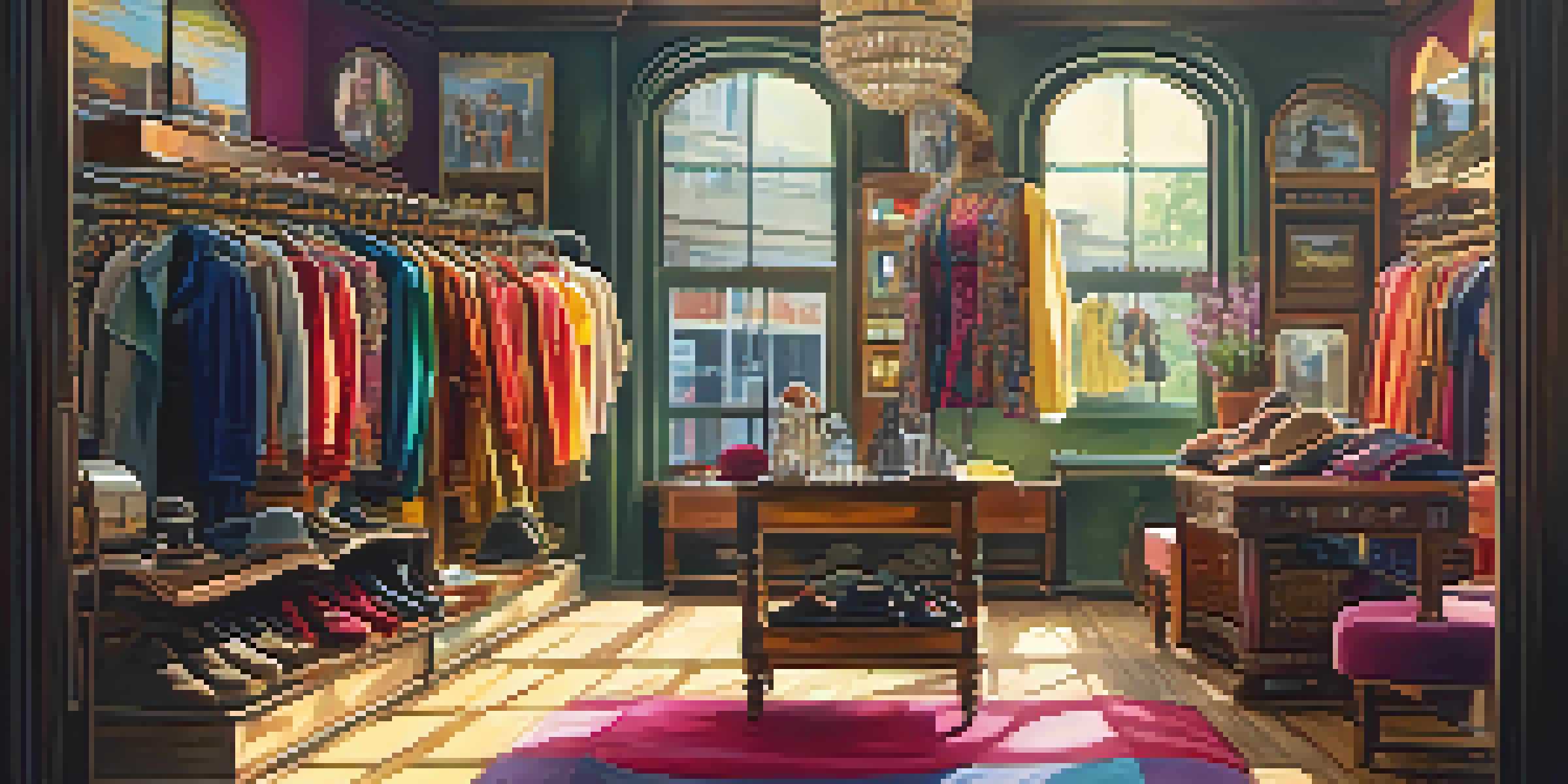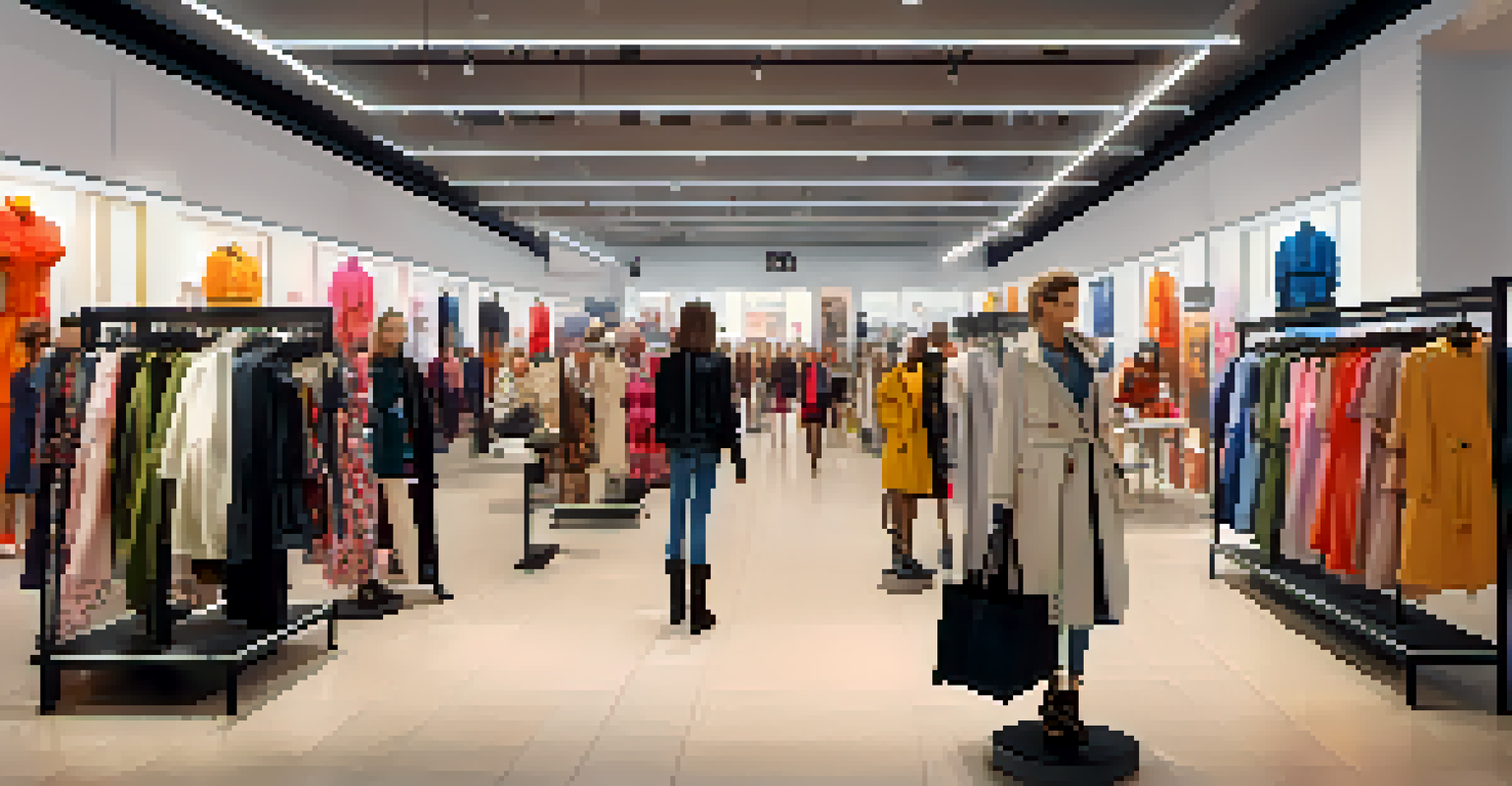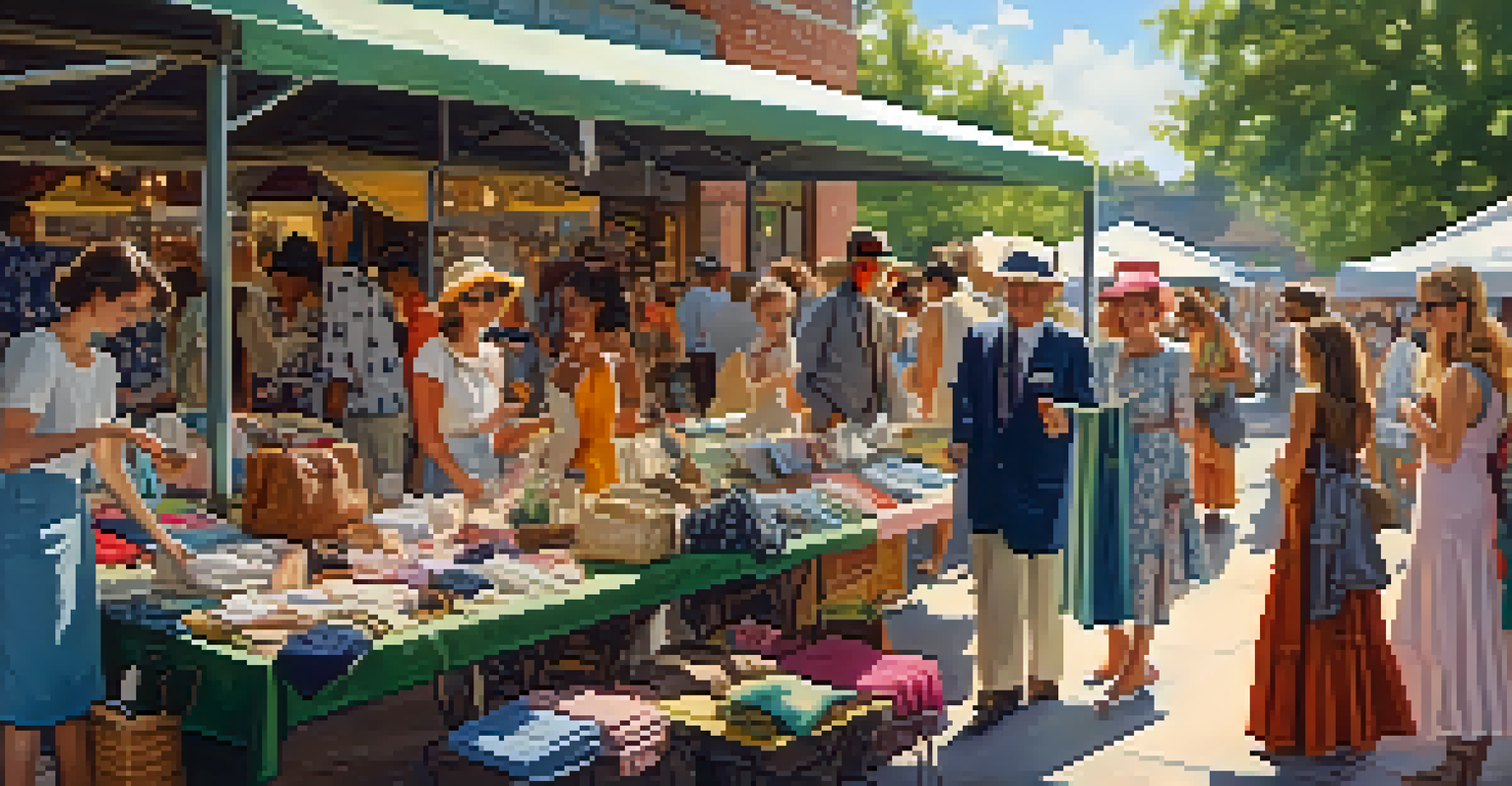Vintage vs. Fast Fashion: Consumer Behavior Insights

Defining Vintage and Fast Fashion: What Sets Them Apart?
Vintage fashion refers to clothing that is at least 20 years old, often celebrated for its unique styles and historical significance. In contrast, fast fashion is a modern approach where brands rapidly produce inexpensive clothing to keep up with trends. This stark difference in production and aesthetics creates diverse consumer experiences and preferences.
Fashion is the armor to survive the reality of everyday life.
While vintage pieces are often seen as timeless and collectible, fast fashion caters to the immediate desires for trendy, affordable wear. This leads to distinct shopping behaviors, with vintage shoppers typically valuing quality and sustainability, while fast fashion consumers may prioritize price and availability. Understanding these motivations helps clarify the ongoing debate between the two styles.
Both vintage and fast fashion play vital roles in the fashion industry. Each attracts different demographics, shaping how consumers express their identities and values through clothing. For example, a vintage enthusiast may appreciate the story behind a piece, while a fast fashion shopper might be focused on the latest celebrity styles.
The Rise of Sustainability: A Key Factor in Consumer Choices
In recent years, sustainability has become a buzzword in the fashion world, influencing consumer behavior significantly. As awareness about environmental issues grows, many shoppers are leaning toward vintage options, seeing them as a more eco-friendly choice. This shift reflects a broader trend where consumers want to align their purchases with their values.

Fast fashion brands are also making strides to adopt more sustainable practices, but the rapid production model often raises concerns about waste and environmental impact. Consumers are becoming increasingly savvy, navigating these complexities when deciding what to buy. This has led to a more informed, conscious purchasing process.
Vintage vs. Fast Fashion Defined
Vintage fashion celebrates unique, timeless pieces, while fast fashion focuses on quickly produced, affordable clothing.
The desire for sustainable fashion doesn’t just benefit the environment; it also alters how brands market themselves. Vintage shops often highlight their unique stories and environmentally friendly practices, while fast fashion retailers are now introducing eco-collections to appeal to this growing demographic. This evolving landscape showcases how sustainability is shaping consumer preferences.
Emotional Connections: Vintage vs. Fast Fashion Experiences
Shopping for vintage clothing often evokes a sense of nostalgia and personal connection. Many consumers enjoy the thrill of finding unique, one-of-a-kind pieces that tell a story, creating emotional ties that go beyond mere aesthetics. This emotional aspect can turn shopping into a memorable experience, fostering loyalty to vintage brands.
The best things in life are free. The second best are very, very expensive.
On the other hand, fast fashion offers instant gratification, allowing consumers to quickly update their wardrobes with the latest trends. This immediacy can be appealing, especially for those who enjoy keeping up with fashion cycles. However, this can lead to a more transactional shopping experience, where the emotional connection to the item may be less significant.
These differing emotional experiences can influence buying decisions, as vintage shoppers often cherish the memories associated with their finds, while fast fashion consumers might focus more on the excitement of newness. Ultimately, the emotional context of shopping plays a crucial role in shaping consumer behavior in both sectors.
Demographic Differences: Who Prefers Vintage vs. Fast Fashion?
Demographics play a significant role in the preferences for vintage or fast fashion. Generally, younger consumers, particularly Gen Z, are gravitating towards vintage due to its sustainability and uniqueness. This age group often seeks to express individuality through distinctive pieces, making vintage shopping a popular choice.
Conversely, millennials and older generations may have a mix of preferences, often influenced by budget constraints and lifestyle needs. Fast fashion appeals to those seeking convenience and affordability, especially for everyday wear. Understanding these demographic trends helps brands tailor their offerings to cater to specific consumer segments.
Sustainability Drives Consumer Choices
Growing environmental awareness is pushing consumers toward vintage options, though fast fashion brands are adapting with eco-friendly practices.
As the market evolves, brands are recognizing the need to appeal to varying demographics. Vintage shops often target younger audiences through social media and influencer partnerships, while fast fashion brands are expanding their product lines to meet diverse age groups. This dynamic landscape underscores the importance of knowing your audience in the fashion industry.
Price Sensitivity: How Cost Influences Consumer Choices
Price is a significant factor in consumer behavior, particularly when comparing vintage and fast fashion. Fast fashion is known for its affordability, making it accessible to a wide range of shoppers. This low-cost appeal can be a driving force for consumers who prioritize budget over quality or sustainability.
In contrast, vintage clothing often comes with a higher price tag due to its uniqueness and the labor involved in sourcing and restoring pieces. For many, this price reflects the quality and craftsmanship of the item, aligning with the values of those who prioritize sustainable and ethical fashion choices. However, some consumers may be reluctant to invest in vintage due to perceived costs.
Ultimately, price sensitivity varies across demographics and individual preferences. While some consumers may splurge on a vintage find as a statement piece, others may opt for multiple fast fashion items to keep their wardrobes fresh. Understanding these price dynamics is key for brands when positioning their products.
The Role of Social Media in Shaping Fashion Trends
Social media has become a powerful tool in shaping consumer behavior, particularly in the fashion industry. Platforms like Instagram and TikTok showcase trends and styles, influencing consumers' decisions to lean towards either vintage or fast fashion. Vintage clothing often gains popularity through influencers who showcase unique pieces, driving interest and demand.
Fast fashion brands use social media to promote their latest collections, capitalizing on the instant nature of trends. This rapid dissemination of information creates a fast-paced shopping environment, where consumers feel pressure to keep up with continually changing styles. As a result, social media can intensify the allure of both shopping experiences.
Emotional Connections Influence Purchases
Vintage shoppers often seek emotional ties to their finds, whereas fast fashion consumers prioritize the excitement of new trends.
However, the impact of social media goes beyond mere promotion; it also builds communities around fashion choices. Vintage lovers often create online spaces to celebrate their finds, while fast fashion consumers share their latest hauls. This interconnectedness enhances consumer experiences and fosters loyalty, regardless of the shopping preference.
Future Trends: Where Is the Fashion Industry Headed?
As consumer behavior continues to evolve, the fashion industry is likely to experience shifts in preferences between vintage and fast fashion. With growing awareness of sustainability, more consumers may gravitate towards vintage as a primary choice. This trend suggests a potential revival of timeless styles, emphasizing the importance of quality over quantity.
On the other hand, fast fashion brands are adapting to consumer demands by incorporating sustainable practices and ethical sourcing. This fusion of speed and responsibility could make fast fashion more appealing to those who appreciate convenience but wish to minimize their environmental impact. The future will likely see both sectors adjusting to meet these changing consumer expectations.

Ultimately, the intersection of vintage and fast fashion presents intriguing opportunities for the fashion industry as they respond to consumer insights. The brands that can authentically connect with their audiences, prioritize sustainability, and create meaningful experiences will likely emerge as leaders in this dynamic landscape.